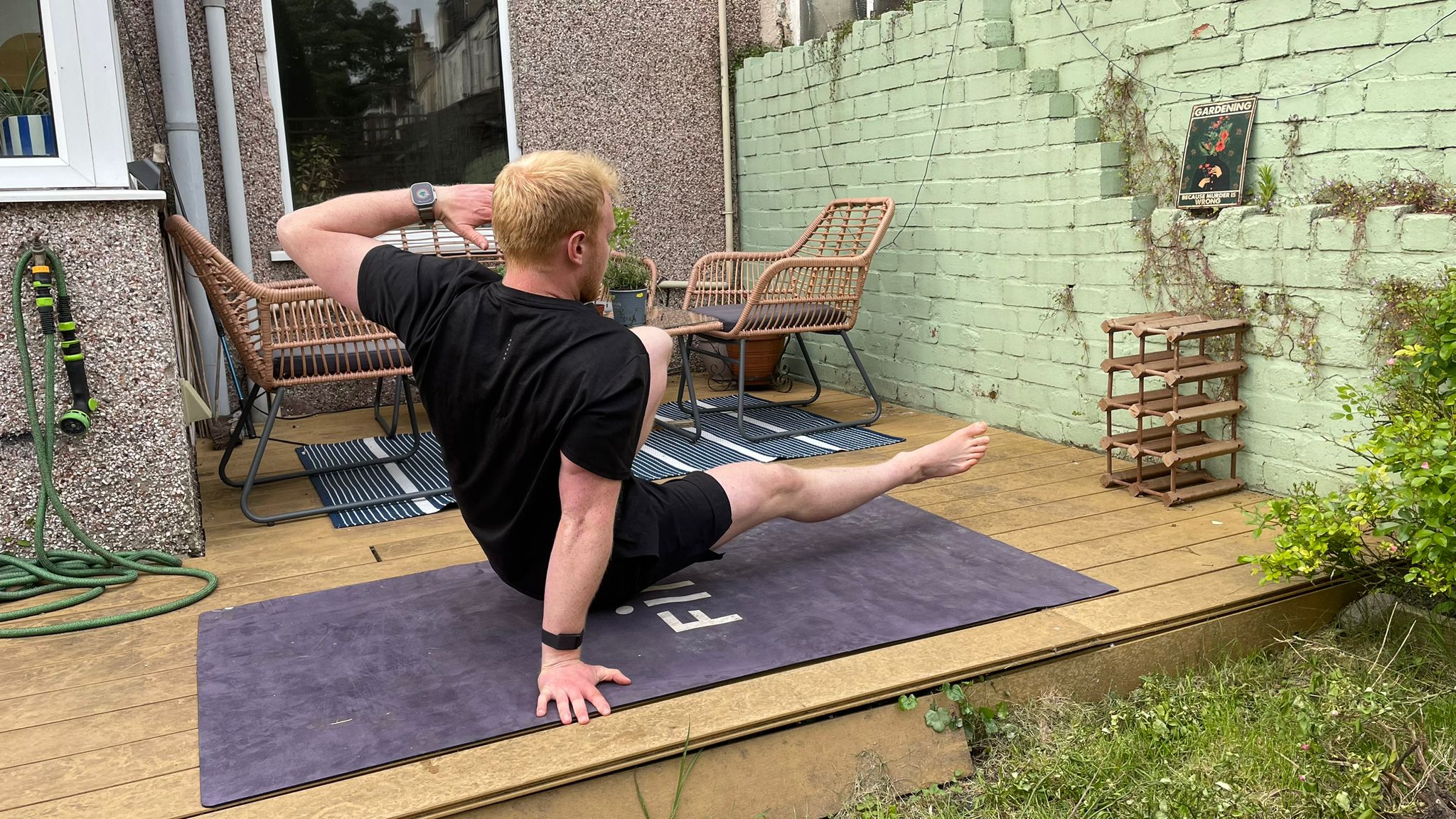
I’ve been training for more than a decade and firmly believe that certain workout staples like squats, lunges, and bench presses should form the basis of every strength training routine. But when I was introduced to a new bodyweight move recently, I couldn’t resist giving it a go. And I was impressed with the results.
It’s called the side kick-through and it looks like a cross between a core-strengthening exercise and a breakdancing move. When I spoke to top trainer Hannah Eden recently she said this move helped to improve her mobility, protect her from injury and develop powerful mid-body muscles.
With this impressive testimony behind it, I decided to add the side kick-through into my weekly core workouts, and find out whether it lived up to the hype.
How to do the side kick-through
- Start in a tabletop position, with your hands directly beneath your shoulders, your weight spread evenly between your hands, knees and toes. You should have a flat back, vertical thighs and shins parallel to the floor
- Lift your knees so they hover about an inch off the floor.
- Lift your right foot off the floor then lift your left hand off the floor and turn your torso to your left.
- Kick your right leg through to your left side by extending it under your body. Your right foot should be pointing in the same direction as your left now.
- Reverse this motion to return to the starting position, then repeat on the other side.
Why I like the side kick-through



1. It makes you move in different ways
The body moves in three planes of motion; sagittal (up, down, forward and backward), frontal (side-to-side) and transverse (twisting). Most strength exercises move predominantly in the sagittal plane, but that’s not the only way we move.
In daily life, we might have to twist quickly to grab something from a supermarket shelf or step to one side to make space on the sidewalk. If our bodies haven’t built up strength for these kinds of movements, we’re more susceptible to injury.
When I spoke to NASM-certified personal trainer Susane Pata recently, she stressed the need for “multiplanar training” to develop a body that’s “resilient and durable”.
The side kick-through incorporates all three planes of motion, helping you build a body that moves well in all directions so you can perform at your best.
2. It’s fun
Fun is one of my biggest training priorities. After all, if I don’t enjoy it, I’m unlikely to keep coming back for more. That’s why I like to mix up my abs workouts as they can quickly become monotonous if they’re just set after set of sit-ups.
This exercise is a an enjoyable way to mix up the way you train your core, engaging both your mind and body at once.
“You can’t do it sloppily, you have to be so precise,” says Eden, and she’s spot on.
Unlike in a sit-up where I can switch off and mindlessly crunch through reps, I found the side kick-through required my full attention as I tried to perfect new movement patterns. Formerly a keen soccer player, I’ve always loved learning new skills, so this coordination test was right up my street.
At first, there was a lot of falling over, slow reps and fudged attempts. But after a while, I started to get the hang of it.
3. It’s challenging
I never want to scare people away from challenging workouts, but for strength training to be effective it does need to challenge you.
Your body adapts to handle the demands you place on it, so you need to push (and continually progress your training) if you want to see change.
This exercise did just that, and after a few reps I could feel my mid-body muscles working hard—particularly the obliques, which run down the side of the stomach and are responsible for rotational movements.
It also worked my shoulders through a wide range of motion, which is a sure-fire way of improving strength, mobility and resilience in the joint.







